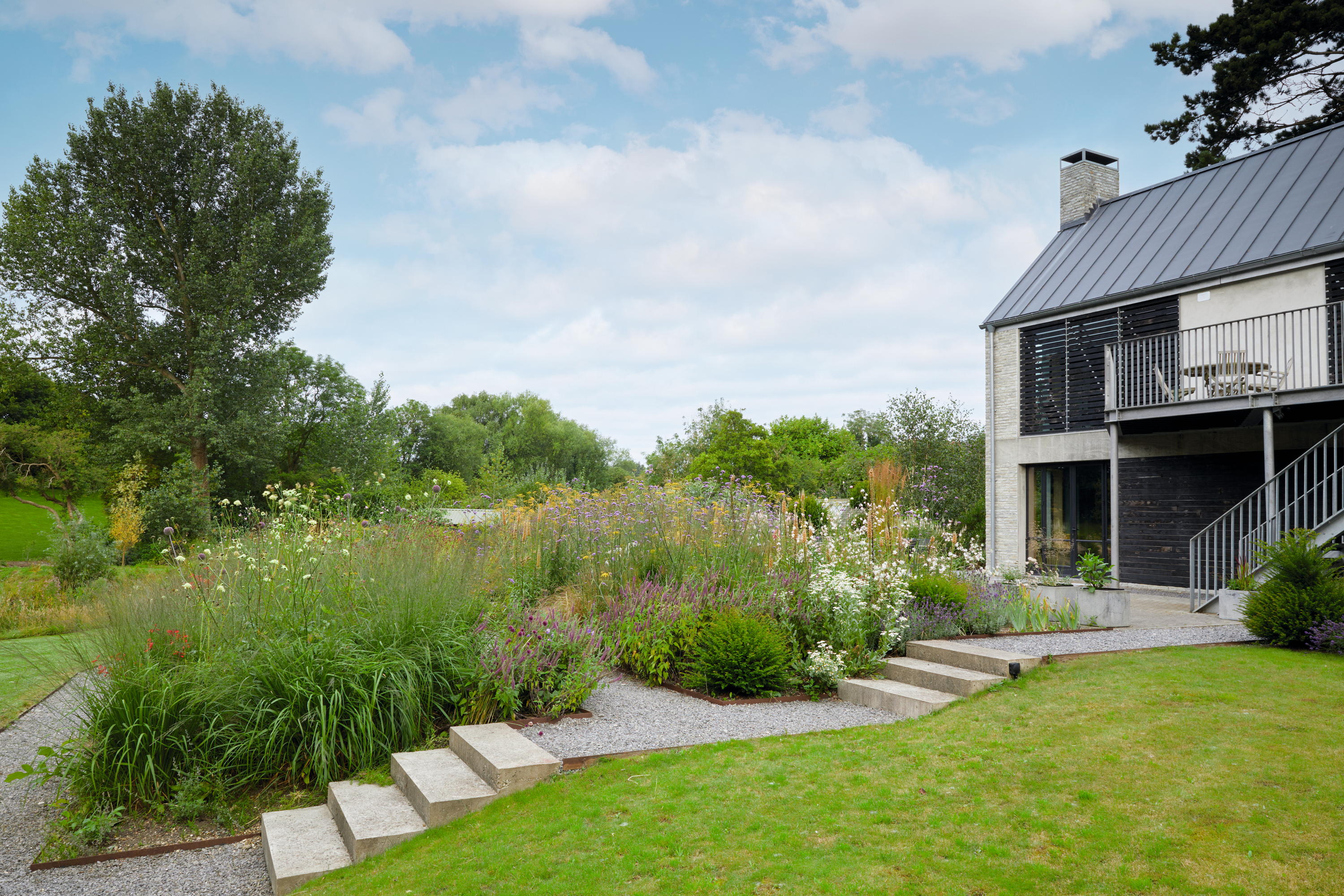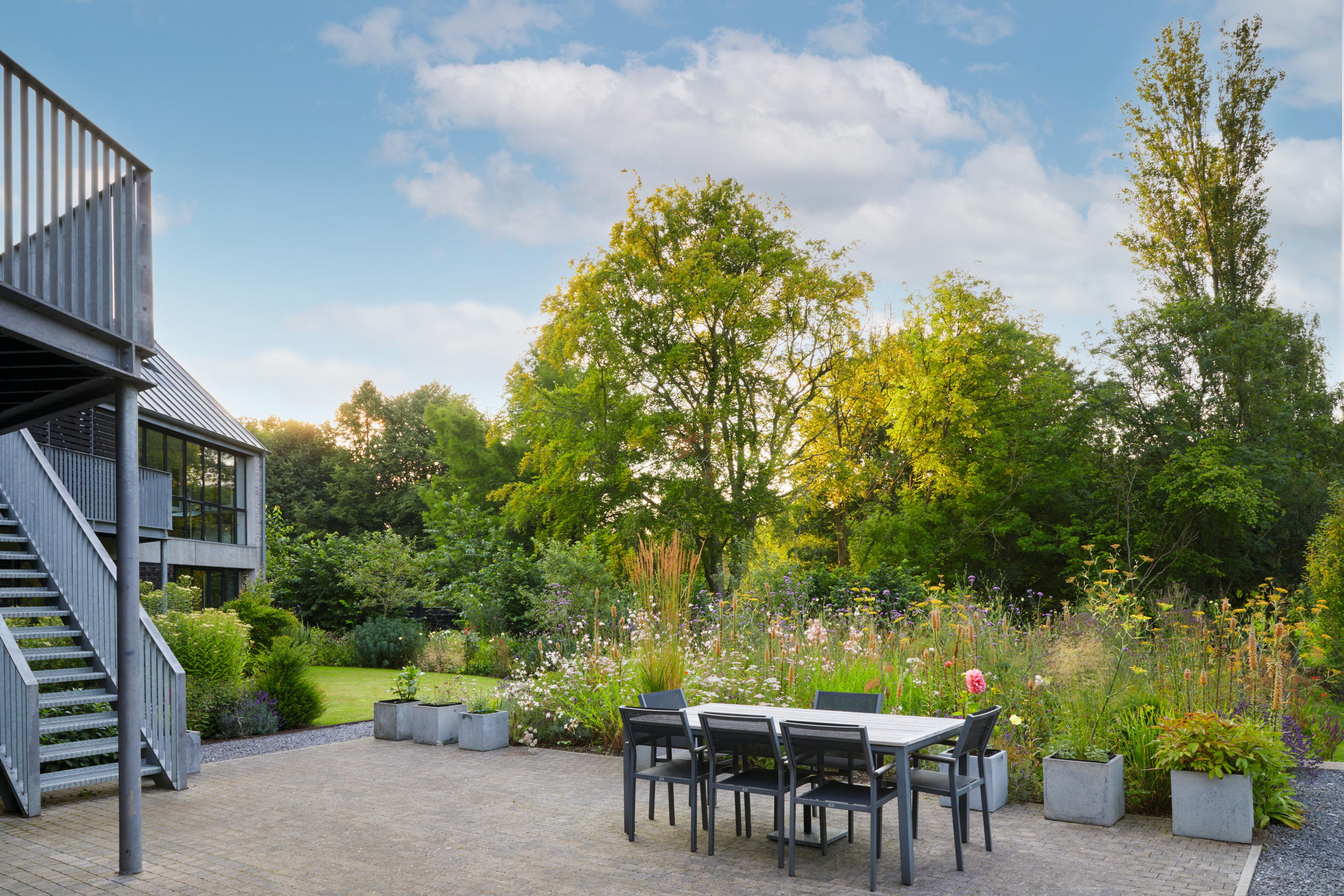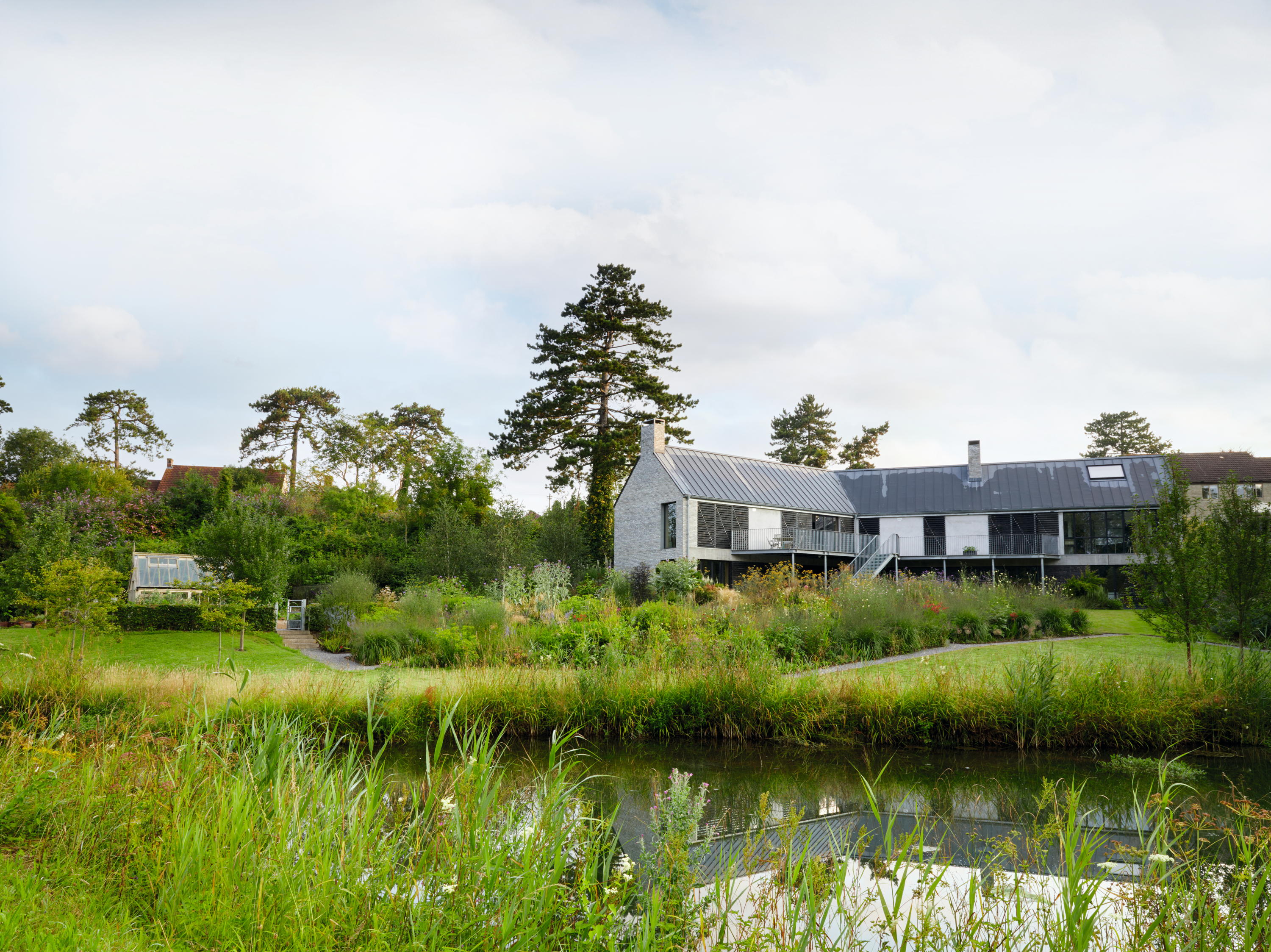'Other people would have given up and turfed half of it over': The couple who turned 'the ugliest house with the nicest view' into a Somerset treasure
With many viewpoints and changes of level, Grove Ley in Somerton, Somerset — home of Dr and Mrs Michael Horder — was not an easy site on which to make a garden. But key to its success, writes Caroline Donald, has been enlarging the pond and creating long beds full of robust perennials and grasses. Photographs by Britt Willoughby Dyer.

James Alexander-Sinclair and Monika Horder don’t bother dancing around dainty conversational niceties: ‘How many times did I tell you that you were taking on rather more than you can cope with?’ asks the designer of his German-born client. ‘Every time we met, which did of course rather irritate me,’ says Monika.
James now eats his words somewhat, as Monika, a retired Lloyds underwriter-turned-letter-press printer, has proved herself more than equal to managing the acre of ornamental and kitchen garden he created for her and her husband, Michael, around their home in Somerton, Somerset. ‘It is a challenge that Monika has taken up admirably; it is quite extraordinary the way she has kept the garden going, whereas other people would have given up and turfed half of it over.’
When Michael and Monika were thinking about leaving west London for the country in 2016, their architect, Neil Choudhury, advised them to ‘buy the ugliest house with the nicest view’. In the end, they bought two adjoining properties, knocked them down and built a contemporary house of blue lias stone and concrete, with lots of raw grey metalwork and a black zinc roof, tucked a little further down the slope than the original railway houses, to give it more privacy.

Architectural grasses, spires of Digitalis ferruginea and fluffy herbaceous perennials, such as Foeniculum vulgare ‘Purpureum’, soften the industrial style of the new house.
Based on the principle of a Somerset longhouse, the reception rooms and the main bedroom are on the upper floor, with two wings hinged at a wide angle. This allows views over the whole reunited plot to the borrowed landscape of the neighbour’s land beyond the stream. A field hedge topping the other slope creates a near horizon, so the house looks out at a private green amphitheatre: rooms, indeed, with a nice view. It is, however, a tricky site that includes multiple viewpoints and changes of level. ‘As you see it all at once,’ points out Monika, ‘if you get it wrong, you get it really wrong’.
Step in James, whose cheery, informative blog she admired: ‘It was very amusing; it came from the heart.’ As the house was to be contemporary in style, she asked if he would help her create something similar: a garden in the country that wasn’t a traditional English country garden. On his first visit, the designer and his potential client stood at the top, surveying the overgrown land below. ‘By the end of a couple of hours, we thought “this is going to be quite fun”. As to the brief: “Make Monika happy.”’
Wildlife would also find a happy habitat. When the house was being built, down came 35 poplars to create a clearer view of the land — they have been replaced with carefully placed fruit trees that don’t constrain this — and the pond was enlarged. ‘James said to make it three times the size,’ says Monika. ‘You don’t have so much planting to do — you just have water — and it costs less to look after. I’m not so sure about that last bit, as it needs annual cleaning and dredging, but it is an integral feature of the garden and attracts lots of wildlife, so it was worth it. We have herons, egrets, wild duck, moorhens and have even spotted an otter.’

The pond at Grove Ley, enlarged by three times its original size, dominates the view from the house and now attracts egrets, wild duck, moorhens, herons and even an otter.
Otherwise, once the builders had left, the garden was a blank canvas on which to work. A wide terrace of engineering brick extends to the south of the house, underneath which is a tank that can hold 10,000 gallons of grey water for irrigation. Neither James nor Monika were keen on terracing the slopes below, however, so, instead, long beds of tall grasses and strong, soaring herbaceous plants stretch like fingers down the slopes, their architectural forms suiting the rather raw, industrial style of the building: ‘We have a lot of skeletons in winter,’ says James. Blue-lias gravel paths run down between them, with changes of level discreetly dealt with by concrete steps, yet, when you are looking down from the terrace, it looks like one big block of texture and colour. To the north and east of the house are quieter areas evoking a woodland, including silver birches, which remind the Horders of the area of west London they left and a border of nut trees and fruit bushes planted specifically for wildlife.
Exquisite houses, the beauty of Nature, and how to get the most from your life, straight to your inbox.
Down by the pond, the robot mower trundles around the grassy areas, occasionally falling into the water, but otherwise doing the job of an under-gardener. ‘James told me I had to get a Mr Corduroy,’ says Monika. ‘One came and said “oooh, it is a bit of a mess; we will take out all that” — and I thought, uh uh, he is not going into my garden.’ Consequently, it is all down to her, save for invaluable occasional input from Agapanthus Landscaping Services.
To create a further rod for her own back, Monika had always dreamt of a kitchen garden — here, Michael comes in, as he is an excellent cook and enjoys picking his own ingredients. There is a hedged area with raised beds of vegetables and fruit bushes, plus several fruit trees dotted around the place that include many unlikely to be available in the village shop, such as medlars, pomegranates, szechuan pepper, cobnuts and Chilean guava.
James returns at least twice a year. This prompted a crisis in his client in its second year when she was still finding her way horticulturally and was worried he would be cross about the way his designs had been looked after. ‘He said “I’m coming” and I said “no you are not, because I am so ashamed and embarrassed”.’ Nevertheless, he turned up, to find a tearful client. ‘He sat me down and said: “Do not worry. It is not my garden, it is yours. If it makes you happy, that is all that matters.”’ It certainly does; brief fulfilled.